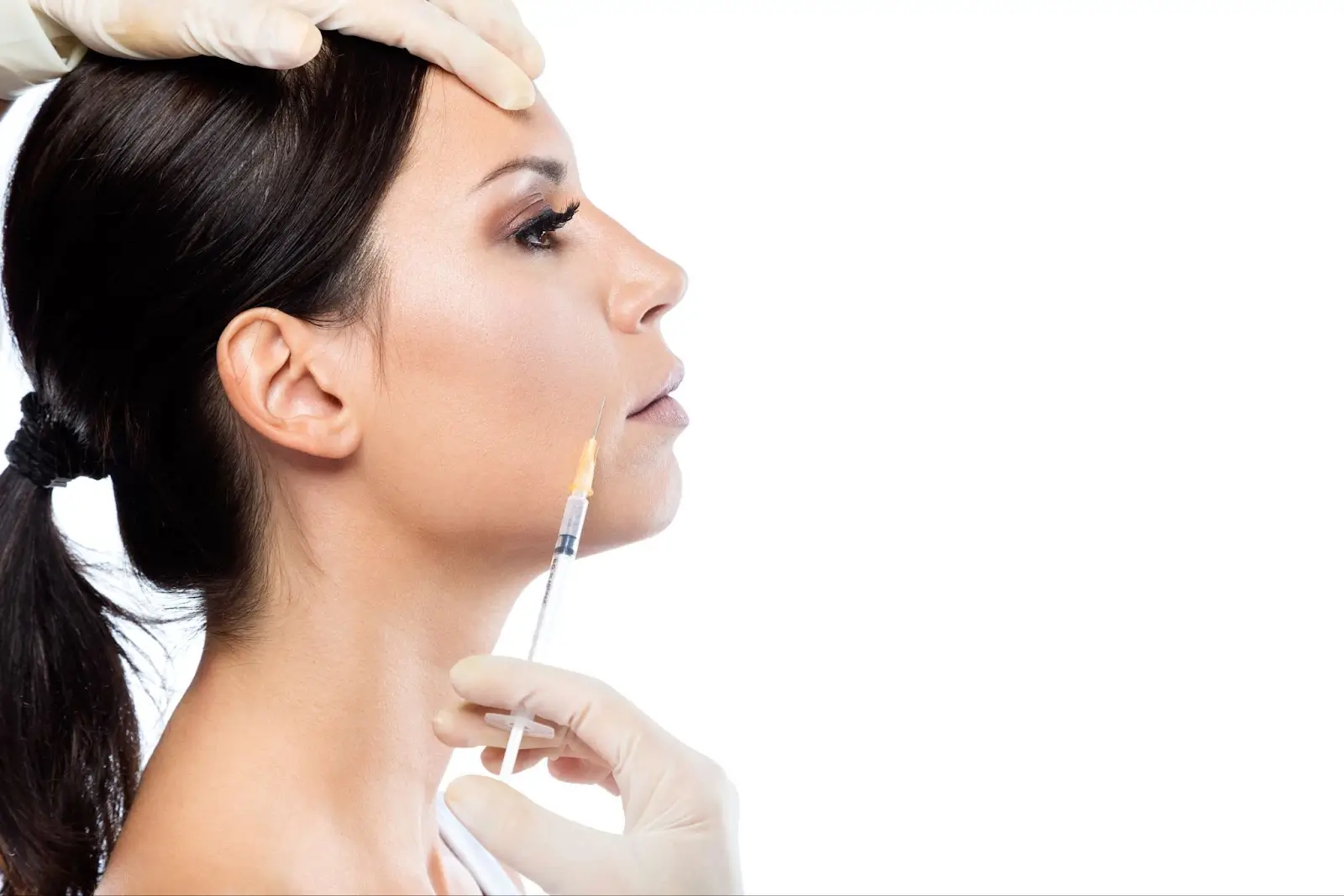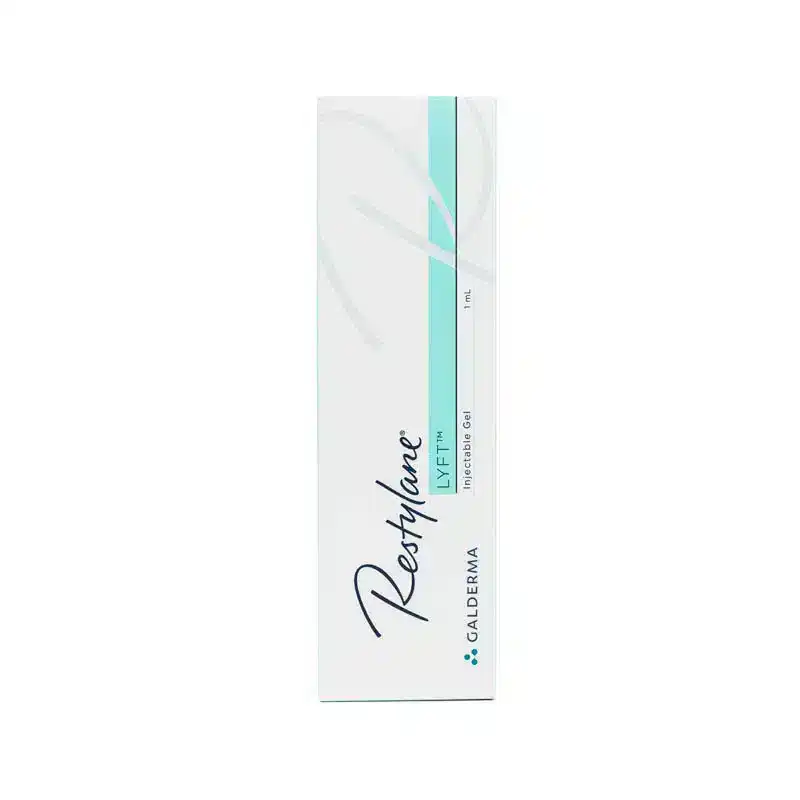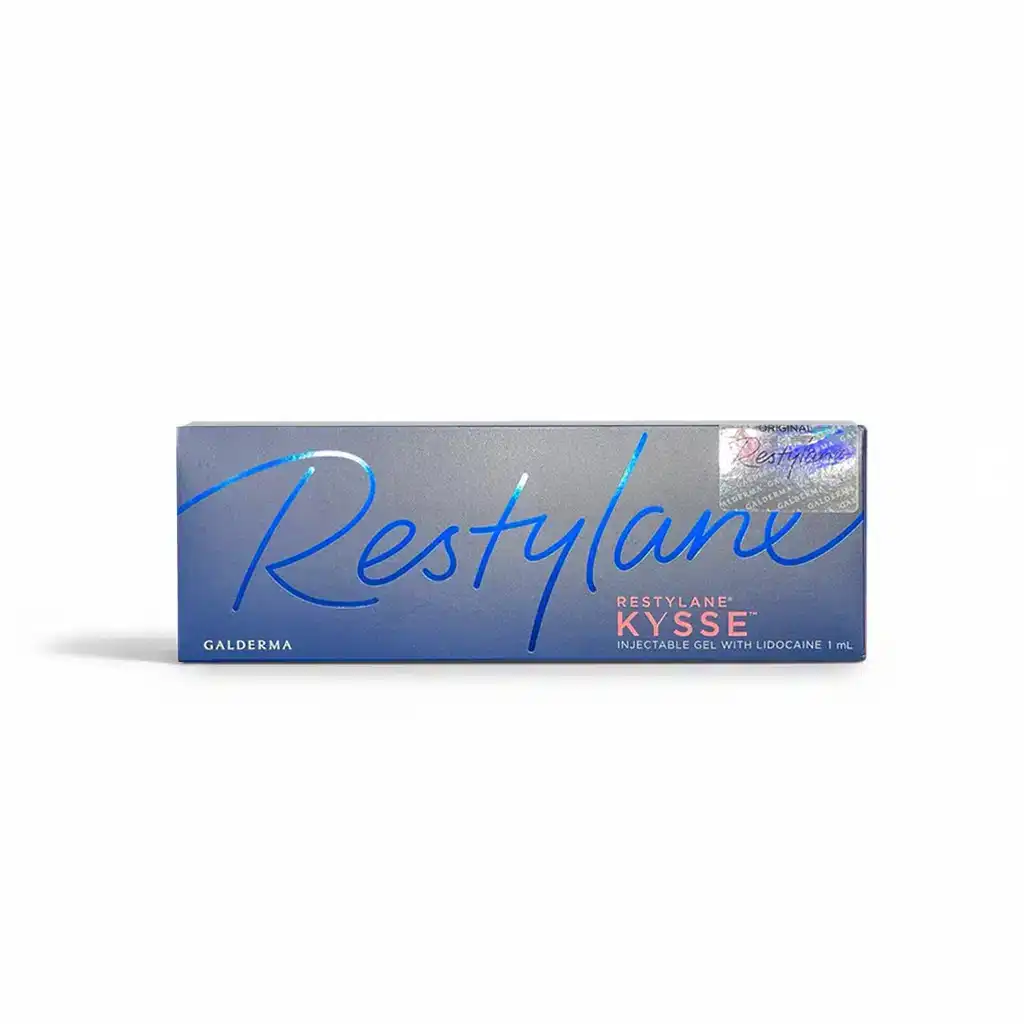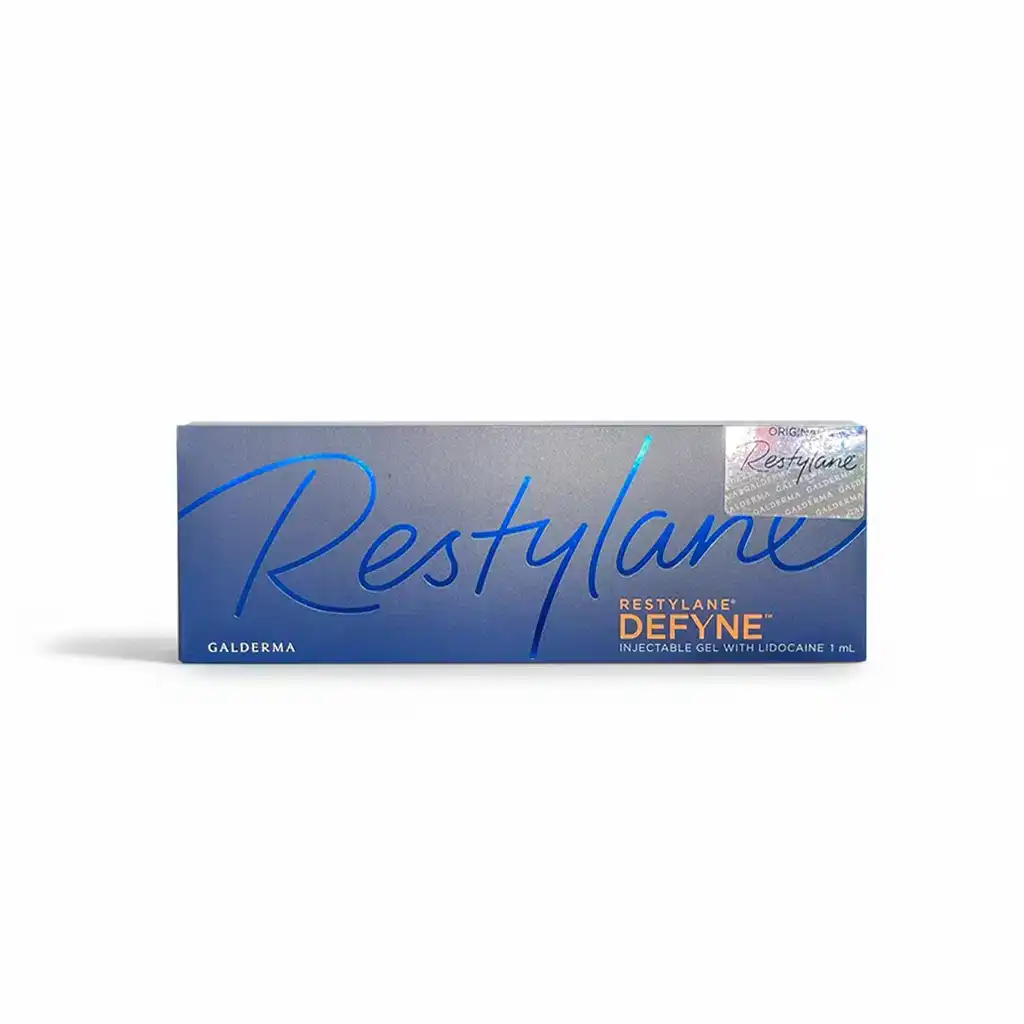Only for Licensed Professionals
Only for Licensed Professionals
.webp)
Restylane vs Juvederm – How Do the Leading Dermal Fillers Compare?
Nina Petrovic
Last Updated On: August 11, 2025
In 2024, over 5.3 million soft tissue filler procedures were performed in the United States, making them one of the most popular non-surgical cosmetic treatments. From restoring lost volume to smoothing out wrinkles and enhancing facial contours, it’s no wonder these treatments are in such high demand across all age groups.
Among the top names in the filler world are Restylane and Juvederm, two hyaluronic acid-based injectables that have earned a strong reputation for delivering natural, youthful results. While they share many similarities, there are key differences that could make one a better choice for your unique needs.
In this article, we’ll break down the key features of both Restylane and Juvederm—looking at their formulations, how long they last, what they’re best used for, and what patients are saying about their experiences. Let’s dive into how these leading dermal fillers compare to help you make a more informed decision.
Key Takeaways
- Restylane and Juvederm are both popular hyaluronic acid-based dermal fillers with distinct formulations that make them suitable for different treatment needs.
- Restylane uses NASHA® technology for firmer gels that provide lift and structure, ideal for contouring and deep support in areas like the cheeks and nasolabial folds.
- Juvederm, with its Vycross® technology, offers a smooth-gel consistency for natural-looking results, especially in delicate areas like the lips and under-eye hollows.
- Both fillers typically offer results lasting between 6 to 24 months, depending on the specific product and area of treatment, with Restylane Lyft lasting up to 12–15 months in more stable areas.
- Safety is a key focus for both products, with side effects like swelling, redness, and bruising being temporary. Serious complications are rare but can occur, especially if the filler enters a blood vessel.
- When choosing between the two, consider factors like treatment goals, desired texture, longevity, and the injector’s expertise. Often, a combination of both can provide the best results for multi-zone rejuvenation.
- Both fillers are priced similarly, with average costs around $550–$800 per syringe, but the decision should be based on which product best suits the individual needs of the treatment area.
About: Operating since 2016, Med Supply Solutions is known for being one of the industry’s top and trusted suppliers of cosmetic and viscosupplementation products. If you’re looking to buy Restylane online, contact our sales department for more information.
Tier pricing
Save 5.92%
6 or more
$159.00 each
Save 8.88%
11 or more
$154.00 each
Save 11.83%
21 or more
$149.00 each
Tier pricing
Save 5.59%
6 or more
$169.00 each
Save 8.38%
11 or more
$164.00 each
Save 11.17%
21 or more
$159.00 each
Tier pricing
Save 4.78%
6 or more
$199.00 each
Save 7.18%
11 or more
$194.00 each
Save 9.57%
21 or more
$189.00 each
Restylane vs Juvederm: Composition and Rheology

When choosing between Restylane and Juvederm, understanding their compositions can make a significant difference in the results you can expect.
Restylane relies on NASHA (Non-Animal Stabilized Hyaluronic Acid) and OBT (Optimal Balance Technology). NASHA produces firmer gels that hold their shape well, which is perfect for contouring and structural support, especially in areas where more definition is needed. On the other hand, OBT provides a softer, more flexible feel, making it ideal for more dynamic areas of the face where natural movement is important.
Juvederm uses Vycross technology, which blends high and low molecular weight hyaluronic acid (HA) for a smoother, gel-like consistency. This formulation allows for a more even distribution under the skin, especially in delicate areas like fine lines. It may offer smoother integration in certain areas compared to NASHA, giving a more seamless result, although this depends on the area being treated.
The texture differences between the two brands are notable. NASHA gels are firmer, providing lift and definition in areas that require more structural support. The Vycross gels from Juvederm, on the other hand, are silky and cohesive, offering a more subtle volume boost with less sculpting resistance.
Restylane vs Juvederm: Clinical Performance and Longevity
Longevity and clinical performance are key factors when deciding between Restylane and Juvederm. Both fillers have strong reputations for reducing wrinkles, restoring volume, and enhancing facial contours. However, their distinct formulation technologies can affect how long the results last and how they perform in different facial areas.
Juvederm Vycross Fillers (Voluma, Volbella, Vollure)
These products provide longer-lasting results, ranging from 12 to 24 months, with Voluma lasting up to 24 months. This longevity is due to the Vycross technology, which creates tighter crosslinking between the molecular weights of HA, allowing the product to maintain its structure for a longer period.
The smooth-gel consistency also blends seamlessly into the skin, making it ideal for soft transitions in areas where subtle volume is required.
Restylane NASHA and OBT Fillers (Lyft)
These deliver results that last between 6 to 12 months, with some formulations like Restylane Lyft lasting up to 12–15 months in less mobile areas like the cheeks. It’s important to note that Restylane Lyft longevity can vary based on the injection site, with cheeks generally lasting closer to 12 months, while areas like hands or nasolabial folds tend to have a shorter duration (6 months).
The firmness of NASHA gels helps lift and sculpt, making it ideal for structural support in deeper creases or areas that require more definition.
Specific treatment suitability also plays a role in the performance of these fillers. For example, Restylane for nasolabial folds benefits from the firmer structure of NASHA, which can hold volume well in deeper lines. On the other hand, Juvederm’s Vycross is perfect for areas requiring softer, more natural-looking transitions, such as the lips and under-eye hollows.
Restylane vs Juvederm: Safety Profiles and Adverse Events
Both Restylane and Juvederm are well-established dermal fillers in the aesthetic world for their safety and predictability, with a strong record of delivering well-tolerated outcomes. However, like any cosmetic procedure, there are risks, and it’s essential to be aware of the potential adverse effects.
Commonly Reported Side Effects
- Mild Swelling, Redness, or Bruising: These side effects are common and usually subside within a few days after treatment. They are part of the body’s natural response to the injection.
- Temporary Tenderness or Firmness: A few patients might feel slight sensitivity or a “full” feeling in treated areas, which typically resolves within 1 to 2 weeks.
- Rare Vascular Occlusion: Although rare, this severe complication can occur if the filler enters a blood vessel, blocking blood flow. If symptoms like blanching or severe pain occur, immediate medical attention is required.
Formulation-Specific Considerations
- Juvederm’s smooth-gel texture integrates more seamlessly into the skin, which may reduce the risk of lumpiness. However, its ability to spread means that precision is crucial to avoid overfilling or diffusion into unintended areas.
- Restylane’s NASHA structure holds its place more firmly in the tissue, reducing the risk of migration and making it ideal for areas where shape retention is a priority. This can also be beneficial in dynamic zones where movement is frequent, such as the cheeks.
Restylane vs Juvederm: Cost and Injection Indications

Pricing for both Restylane and Juvederm is similar, with both fillers typically ranging between $550–$800 per syringe. However, the formulation differences and ideal treatment areas can guide which filler is best suited to your needs. Many injectors opt to combine the two products, strategically using each for its unique properties to achieve the best possible result.
| Product | Average U.S. Cost (Per Syringe) | Best Suited Areas | Key Strengths |
| Restylane | $550–$800 | Cheeks, Jawline, Nasolabial Folds | Structural lift, shape retention, ideal for deep support and contouring |
| Juvederm | $550–$800 | Lips, Marionette Lines, Under-Eye Hollows | Smooth-gel integration, soft contouring, minimal lumpiness. |
| Combination Use | Varies (dual-product plan) | Multi-zone facial rejuvenation | Restylane for contouring; Juvederm for seamless transitions in areas like the lips and under-eye. |
Choosing between Restylane and Juvederm depends on the treatment area, facial anatomy, and the injector’s expertise. For optimal results, many patients benefit from using both fillers in one session, addressing different zones with their distinct textures.
Conclusion
When comparing Restylane and Juvederm, the decision isn’t about one being better than the other. Instead, it’s about finding the right fit for your specific aesthetic goals and treatment areas. NASHA technology in Restylane offers shape retention and lifting, while Vycross in Juvederm delivers natural, subtle volume with a smooth integration. Both options are safe, effective, and provide lasting results when performed by an experienced injector.
FAQs
1. Which lasts longer, Restylane or Juvederm?
Juvederm Vycross fillers often last longer (up to 18 months) while Restylane’s NASHA gels generally last 6–12 months.
2. Can I combine Restylane and Juvederm in one treatment?
Yes. Many injectors combine them to leverage different textures for specific areas, such as using Restylane for lift and Juvederm for smooth blending.
3. Which is better for the lips?
Juvederm tends to provide a softer, plumper result due to its smooth-gel consistency, though some prefer Restylane Kysse for defined yet flexible lip shaping.
4. Are the side effects different between the two brands?
Side effects are generally similar, but Juvederm’s smoother flow may reduce palpable lumps, while Restylane’s structure can lower migration risk.
References
American Society of Plastic Surgeons. Plastic Surgery Statistics Report: 2024. Published 2025. https://www.plasticsurgery.org/news/plastic-surgery-statistics
Rohrich RJ, Ghavami A, Crosby MA. The role of hyaluronic acid fillers (Restylane) in facial cosmetic surgery: review and technical considerations. Plastic & Reconstructive Surgery. 2007;120(Supplement):41S-54S. doi:10.1097/01.prs.0000248794.63898.0f
Weinkle SH, Bank DE, Boyd CM, Gold MH, Thomas JA, Murphy DK. A multi‐center, double‐blind, randomized controlled study of the safety and effectiveness of Juvéderm® injectable gel with and without lidocaine. Journal of Cosmetic Dermatology. 2009;8(3):205-210. doi:10.1111/j.1473-2165.2009.00451.x
Products
Cart
Log In
Newsletter
Subscribe for exclusive offers and updates on new arrivals
Share feedback at:
Working Hours
MON - SUN 9AM to 6PM EST
The Most Popular Brands
Med Supply Solutions
Support
Secure checkout is guaranteed with full adherence to PCI DSS payment standards.
Products listed here are guaranteed authentic and manufacturer-sourced.
Pay easily with trusted providers


*Google and Apple Pay are currently only available via a direct link provided by your account manager.
Copyright 2025. Med Supply Solutions


